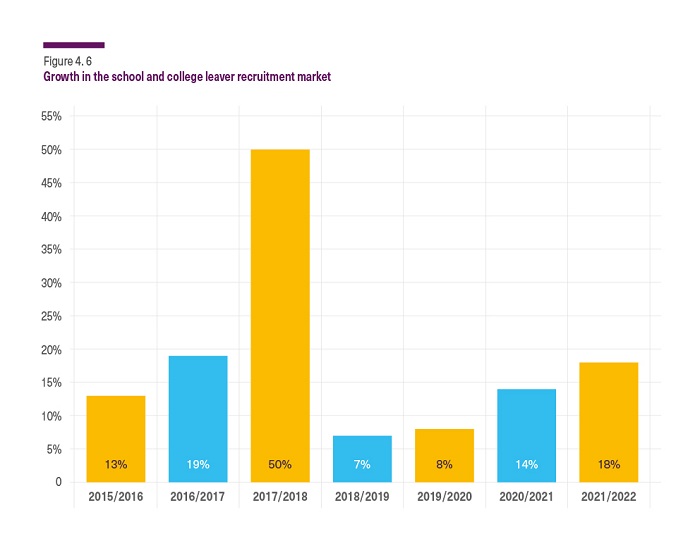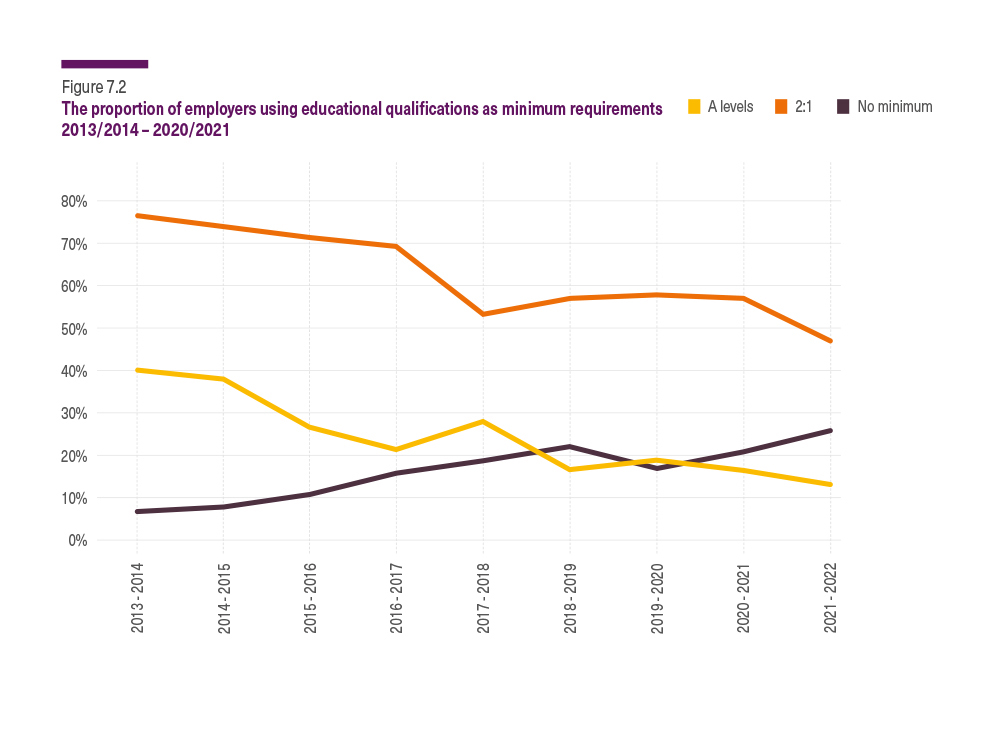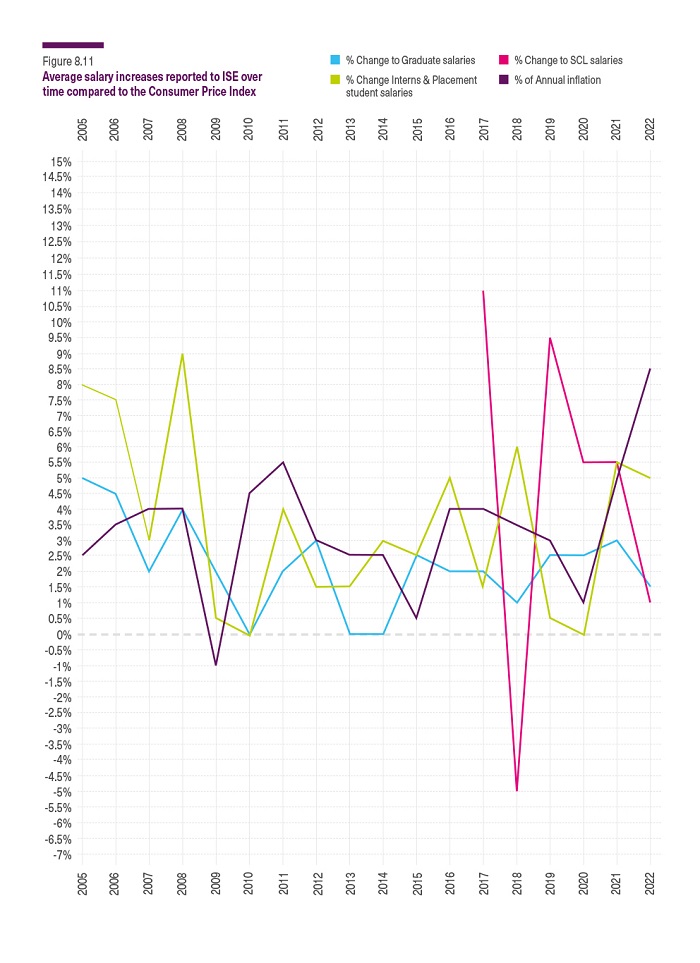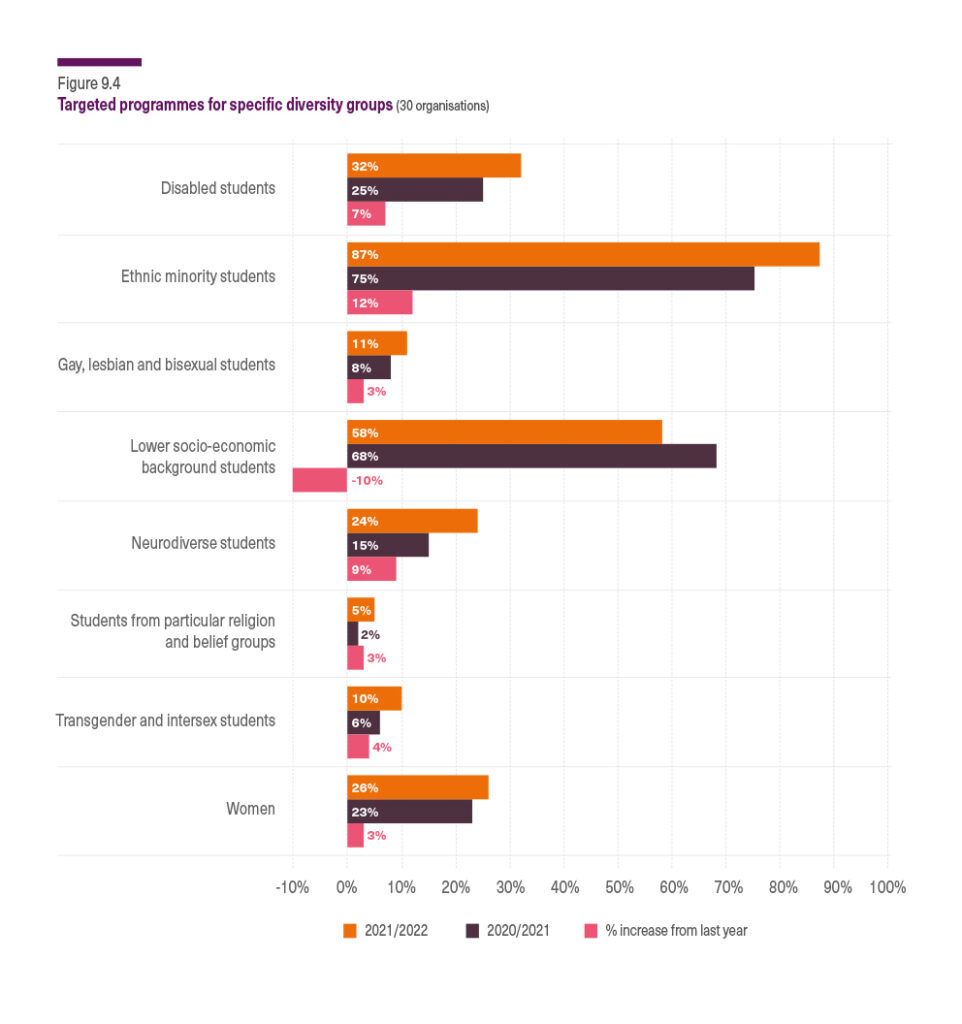ISE’s Student Recruitment survey sheds some light on the significant trends shaping student recruitment this year, says ISE researcher Nicola Thomas.
This year’s ISE Student Recruitment Survey is one of our leading omnibus surveys. Given the rapidly changing economic landscape, exploring the factors impacting the student recruitment is even more pressing.
Here are five of the biggest trends in student recruitment this year.
1. Wider market trends are shaping recruitment
Firstly, there is a significant change to vacancy levels. Levels of recruitment have historically tracked growth and retraction in the UK economy. 2022 was a bumper year with overall student recruitment levels up 19% year on year. For 2023, we predict a growth rate of 6%.
This is still growth, but at a much reduced rate. Our concern is that should financial pressures on employers increase, they will reduce hiring levels. Students shouldn’t panic, but we do advise them to apply early.
When looking at forecasts for hiring in 2022/2023, our forecasts figures predict a small increase (0.01%) in the number of graduates to be hired in 2022/2023, with 0% growth for interns and placements, but continued growth (+28%) for school and college leavers.
This highlights the continuation of a strategic shift for employers to hire school and college leavers, emphasising a gradual and sustained shift in student recruitment.

2. School and college leaver recruitment is a continued focus
School and college leavers are now an important part of the early talent landscape. Most respondents (68%) recruit school and college leavers and other non-graduate entry level hires alongside their graduate hires, this is 5% increase compared to 2021.
This reflects an increasing strategy in student hiring to build a strong talent pipeline from school and college level hires, to apprentices, to placements and interns which feeds into graduate level hiring. Adopting this strategy enables recruitment teams to build talent pools large enough to fill a range of different roles.
Overall, respondents hired a total of 4,913 school and college leavers during 2021/2022, this was up from 4,121 vacancies last year (+19%). Next year respondents indicated they are planning to hire 6,293 school and college leavers, an increase of 28%.

3. Selection practices are changing
Many have questioned employers use of UCAS tariffs and degree results as selection criteria and the number who do this has declined over a number of years now.
For the first time, less than half of employers now stipulate applicants possess a 2:1 degree, and only 13 percent set a UCAS point minimum. This signifies to us that employers place more trust in sophisticated selection tools and seek to broaden the universities, colleges and schools they hire from.
As this illustrates, diversity remains a key priority for our sector when it comes to selection practices. We have always reported how members tackle injustice in attraction, selection and development in our annual Student Recruitment Surveys. To improve our collective understanding of the issues involved and the strategies employers deploy, we have pulled together our related analysis into one section rather than spread it through the report (see section nine).
I’m pleased to see that employers have increased their targets for seven out of eight measures.
 4. Inflation and recession are impacting salaries
4. Inflation and recession are impacting salaries
Salaries are an important part of hiring graduates and school and college leavers. With the UK currently experiencing a cost-of-living crisis we explore how this has impacted graduate and school and college leaver salaries.
In 2021/2022 the typical (median) salary for a graduate was reported as £30,921. For school and college leavers the typical reported salary was £19,521 and £20,967 for interns and placements students.
This is only a slight increase from last year’s figures where the reported typical salary for a graduate was £30,500, £19,489 for school and collage leavers and £20,000 for interns and placement students.

5. Diversity matters and is an important focus for employers
Employers understand the importance of attracting a diverse range of candidates with 37% of respondents reporting that they had formal targets around diversity.
Our data shows the number of organisations with targets against different diversity strands. We see that there is a strong consistency with reported targets on diversity from previous years.
Looking at the most common diversity targets, 93% of employers had diversity targets related to gender, with 73% reporting targets for race and 55% reporting targets for different socio-economic backgrounds.

Final thoughts
The last three years have seen our market contract and rapidly bounce back. Our cautious prediction is that this will be a challenging year in the early talent landscape, but employers’ long-term need for a higher skilled workforce when talent pools are stagnant or declining, will increase, not decrease, with a focus on the need to develop and retain early talent.
Read more blogs on this year’s survey or download the report


0 Comments